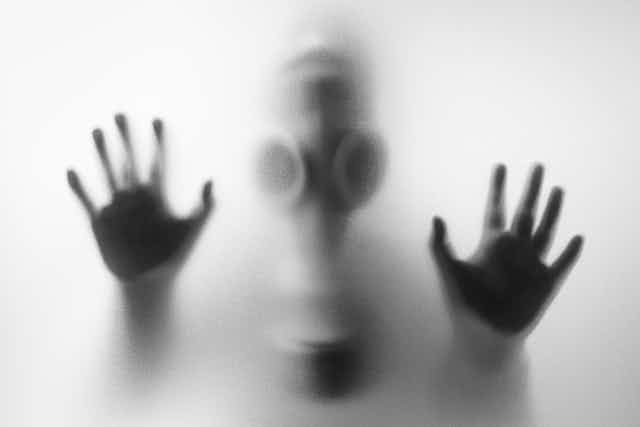The substance that could be responsible for the death Kim Jong-nam, the half-brother of the North Korean leader Kim Jong-un, was the VX nerve agent, according to preliminary reports from Malaysian police.
Kim Jong-nam died on February 13 from a seizure on his way to hospital after complaining that a woman had sprayed chemicals on his face at Kuala Lumpur airport.
The Royal Malaysia Police said in a statement that the results of dry swab tests on the “death of a North Korean national” identified the chemical as “Ethyl S-2-Diisopropylaminoethyl Methylphosphonothiolate”, also known as “VX nerve agent”.
What is VX?
VX is a lethal chemical weapon in the V-series of nerve agents. Although commonly referred to as nerve gases, the chemicals are usually liquids at room temperature.
The V-series were first developed in the UK in the mid-1950s. Like all nerve agents, the V-series block the biological action of the enzyme acetylcholinesterase (AChE).
AChE is responsible for metabolising the neurotransmitter acetylcholine, which in turn is responsible for the transmission of a nerve impulse across the gap (called a synapse) between two nerve cells.
By preventing AChE from metabolising acetylcholine, the nerve agent causes the synapse to become flooded with the neurotransmitter. This saturation leads to the nerve being constantly switched “on”. In the case of nerves that control muscles, this means that the muscle is constantly receiving a signal to contract.
Constant muscle contraction becomes a problem when the muscles in question are the ones that control the expansion of the rib cage, to fill the lungs with air. If these muscles are continuously trying to contract, the body is constantly trying to fill the lungs with air, and thus not allowing the body to expel air from the lungs.
The victim of such a nerve agent usually dies from asphyxiation due to not being able to breathe out.
Other symptoms
Although asphyxiation is usually the ultimate cause of death, exposure to AChE inhibitors has a wide range of symptoms, including runny nose, drooling and contraction of the pupils.
Unlike the nerve agent sarin, which was used to attack the Tokyo subway and Ghouta, a suburb of Damascus in Syria, the V-series are termed “persistent” agents.
In chemical weapons terms, persistent means that the agent has a low volatility. In turn, this means that it can be used in relatively confined spaces (such as an airport terminal) with less risk of obvious adverse effects on bystanders or the perpetrators.
But low doses of nerve agent have been linked with long-term effects in people who did not exhibit clinical symptoms at the time of exposure.
All nerve agents can affect the body either through inhalation or skin contact. The V-series are usually associated with entering the body through skin contact.
Another advantage of using VX for any would-be assassin, is that the amount of VX needed to kill is around 10mg (1/100th of a gram). That is around a tenth of the amount of sarin needed to cause death, and a droplet around the size of the nib of a ballpoint pen.
Who has VX?
VX has been used before as a mode of assassination. Members of Aum Shinrikyo used VX to kill a suspected traitor to the Japanese cult.
The cult also provided their members with the antidote to nerve agent poisoning during the attack on the Tokyo subway. This shows that it is possible for perpetrators to use a nerve agent as a weapon in close proximity, without needing to use bulky protective equipment, or risk lethal exposure themselves.
Since discovery, V-agents have been researched, produced and stockpiled by several countries. Most of those countries have now given up their offensive chemical weapons programs and are in the process of destroying their stockpiles and placing their means of production under international monitoring via the Organisation for the Prohibition of Chemical Weapons (OPCW).
OPCW oversees the Chemical Weapons Convention (CWC). Under the CWC, VX and all nerve agents (and their precursors that have no other legitimate industrial use) are illegal to produce or procure.
North Korea is one of only four countries that have not signed or acceded to the CWC. The North Korean government is believed to have a stockpile of chemical weapons, including V-series agents and can manufacture them in industrial quantities.

